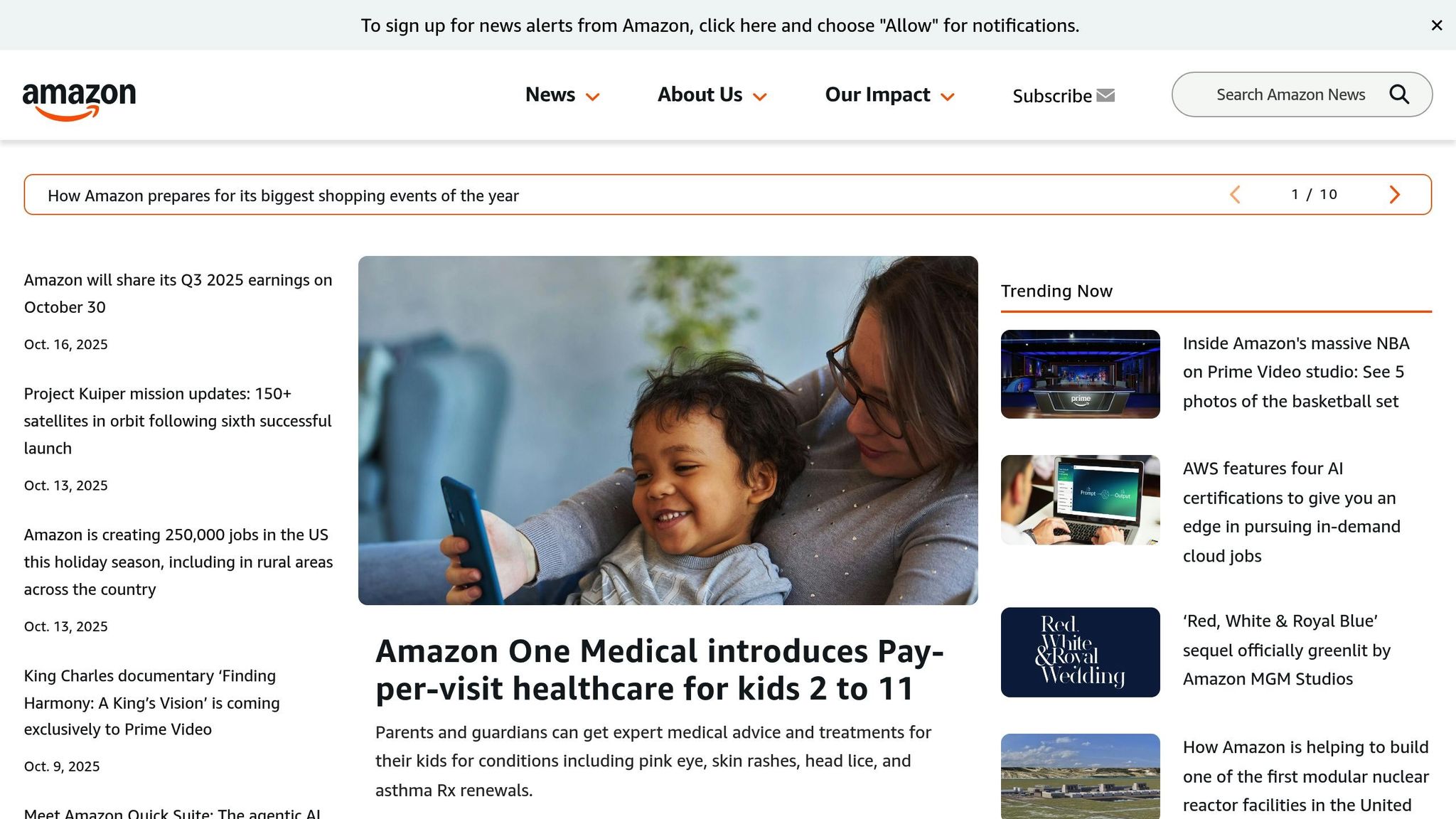Amazon Initiates Major Workforce Reductions Amid AI Transformation
Amazon to cut up to 15% of HR staff as it shifts toward AI and cloud investments.

Amazon has announced a significant restructuring of its corporate workforce, with plans to lay off up to 15% of its Human Resources (HR) staff in the People Experience & Technology (PXT) division. The move, part of a broader strategy led by CEO Andy Jassy, is aimed at reducing costs and enhancing efficiency by integrating automation and artificial intelligence (AI) into its operations.
This decision comes as Amazon continues to invest heavily in AI and cloud infrastructure, highlighting its focus on long-term technological advancements. While the cuts affect corporate roles, the company plans to hire approximately 250,000 seasonal employees for its warehouse and logistics operations, underscoring a dual strategy to balance technological innovation with frontline workforce expansion.
Amazon’s Workforce Realignment

The layoffs in the HR/PXT division mark a pivotal shift in Amazon’s workforce strategy. By targeting traditional HR roles such as recruitment and employee management, the company is leveraging AI to automate tasks historically managed by humans. This approach aligns with Amazon’s broader goal of streamlining operations to maintain a competitive edge in the rapidly evolving marketplace.
The company has emphasized that these changes are necessary to adapt to advancements in technology. According to reports, Amazon’s focus on automation reflects a growing trend in the tech industry, where businesses are integrating AI systems to redefine core processes. However, this restructuring raises critical questions about job displacement and the challenges posed by workforce reskilling.
Dual Workforce Strategy: Corporate Cuts and Seasonal Expansion
While corporate layoffs are underway, Amazon is simultaneously ramping up its seasonal hiring efforts. The company plans to employ approximately 250,000 temporary workers in its warehouse and logistics sectors to support increased demand during the holiday season. This juxtaposition of workforce reduction in corporate roles and expansion in frontline positions highlights the evolving nature of Amazon’s employment strategies.
The contrast between the two workforce dynamics underscores a broader economic trend. Companies, including Amazon, are increasingly prioritizing technology-driven efficiencies in corporate settings while maintaining a robust operational workforce to meet customer demand during peak periods. This approach ensures that while back-office functions are streamlined, customer-facing operations remain well-supported.
Investments in AI and Cloud Infrastructure
Amazon’s decision to restructure its workforce is part of its broader strategy to allocate resources toward AI and cloud infrastructure. The company has announced plans to invest over $100 billion by 2025 in these areas, solidifying its leadership position in these high-growth sectors. These investments aim to enhance operational efficiency, support enterprise customers, and address internal technological needs.
By adopting AI-driven solutions, Amazon is redefining how it manages talent and internal processes. This shift also reflects a larger industry trend where companies are leveraging advanced technologies to optimize operations and reduce costs.
The Role of AI in Reshaping HR Functions
The HR/PXT division is at the forefront of Amazon’s efforts to transform workforce management through AI. Functions such as talent acquisition and employee evaluation, traditionally managed by HR professionals, are increasingly being automated. While this shift promises greater efficiency, it also raises concerns about the potential loss of the human touch in employee interactions.
According to reports, Amazon’s focus on AI underscores its commitment to building a more agile and dynamic workforce model. However, the transition to automation presents challenges, including maintaining employee morale and ensuring a balanced approach to workforce management. The move highlights the need for companies like Amazon to address the implications of automation on organizational culture and employee well-being.
Official Statements and Industry Impact
In an official statement, Amazon acknowledged the difficulty of its decision to lay off employees, emphasizing that the move was necessary to align with its technological goals. "While such decisions are difficult and deeply impactful, they are necessary for the company's long-term objectives and the rapidly evolving technological landscape", the company stated.
Amazon also confirmed that impacted employees would receive severance packages and job placement assistance. Additionally, the company plans to create new roles in AI and cloud operations, offering opportunities for some employees to transition into these areas.
Industry analysts suggest that Amazon’s approach reflects broader trends in the tech industry, where companies are recalibrating workforce strategies to integrate emerging technologies. This shift may serve as a model for other organizations navigating the balance between automation and employee welfare.
Future Workforce Implications
Amazon’s restructuring highlights the growing influence of AI on global workforce dynamics. As traditional roles are redefined or replaced by automation, the need for workforce adaptability and reskilling becomes increasingly critical. Economically, the move signals a shift toward prioritizing technological investments over conventional labor models.
Socially, these changes pose challenges for employees facing job displacement, particularly in roles that require interpersonal skills. Politically, Amazon’s actions may prompt calls for regulatory measures to address the societal impacts of automation, including support for retraining initiatives.
Despite these challenges, Amazon’s dual strategy of technological innovation and operational expansion demonstrates its ability to adapt to evolving market demands. By investing in AI and expanding its frontline workforce, the company is positioning itself for sustained growth in an increasingly digital economy.
Conclusion
Amazon’s decision to lay off up to 15% of its HR staff reflects a strategic realignment aimed at embracing AI and automation. While these changes highlight the company’s commitment to technological advancements, they also raise important questions about the future of work and the role of human employees in an AI-driven world. As Amazon navigates this transition, its approach is likely to influence broader industry trends and spark ongoing discussions about the balance between technology and workforce management.




